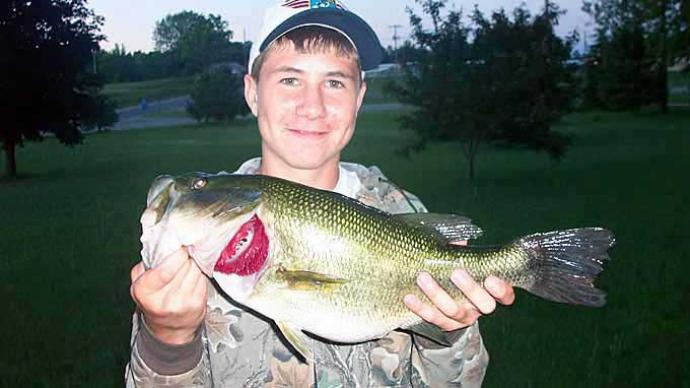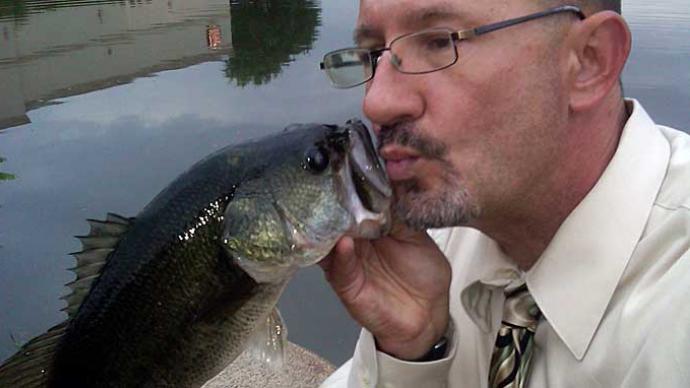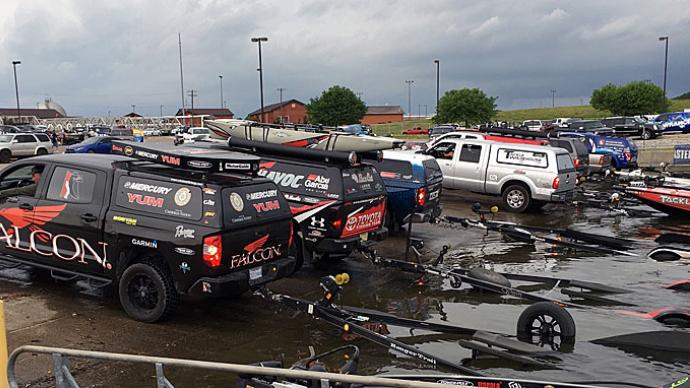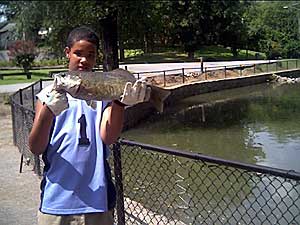
It's easy to overlook such a simple body of water as a retention pond, but let's admit it, sometimes I feel downright guilty about my bass fishing culture when I pull up to my buddy's house and whip an expensive rod and reel combo from my trunk, then walk by neighborhood kids fishing so carefree and unpressured. I've been guilty more than once of overthinking a retention pond and coming away skunked while those same neighborhood kids walk away with several dozen or so fun catches.
As I mentioned, the biggest mistake experienced fishermen make is overcomplicating the situation. The nature of retention ponds is designed to be simple, posing a cerebral conundrum for the ever-studious fisherman.
The locale near where I live is a suburb of a larger metropolis dotted with subdivisions. In nearly all of these neighborhoods, there is a retention pond, and while some might not produce many fish, most do. Many states have Fish and Wildlife regulations that require fish stocking in public access bodies of water to control mosquito population control. People get wide-eyed when you pull fish out of the pond in front of your local Home Depot, between the gas station and the local pharmacy. I've rarely found a retention pond to be completely devoid of fish.
Let's take a quick look at some overly simple observations that will have you considering throwing the rod in the trunk and stopping at that innocuous body of water on your way home from work.
Before I get started, remember that many neighborhoods, office parks, and retail locations have limitations on fishing and trespassing. Trespassing to obtain any type of wildlife is often regarded as poaching and is a severe offense. Practice good outdoorsmanship and obey all posted trespassing and permissions for any body of water that is not federally deemed public.
For those of us who are not pros nor can rent a pilot to fly us over a body of water, break out the computer. Many times, satellite mapping clients, such as Google Earth, will show clear images of a body of water and is often detailed enough to offer a glimpse of subtle pond bottom differences if they exist, as well as features, cover, and access that may not be otherwise known. For example, larger retention ponds contain humps where excavators were positioned as they dug out the ground for the pond. As we know, those humps, drop-offs, and any bottom changes will hold fish when the body of water contains no significant cover.
Additionally, keep track of the water quality of the pond you fish. Many times retention ponds receive runoff from yards and an occasional runoff drain. Therefore they're often surprisingly clear since no rivers or creeks run into them. Once you've established the consistency of the water quality, you can make your lure and color changes according to your expertise and experience to catch those fish.
Retention ponds, except for a few that might be old strip pits, are usually not very deep, with most near my house no deeper than ten feet deep. The lack of substantial depth causes the common logic for thermoclines and bass positioning to require a bit of tweaking. While the water clarity will help prevent extreme heating and cooling effects for that body of water, the shallow depth will allow the overall body of water to fluctuate. I've seen days where I've had as much success at the shoreline as when I worked my lure deep due to consistent water temperatures throughout the water column.
Versatility also has its merit on a retention pond. With the depth so shallow and containing virtually zero cover, a suspended bass four or five feet deep might be just as inclined to pounce on a shallow crank or buzzbait that just went bubbling by. Scientists have proved fish will notice and engage a lure from over eight feet away, so never underestimate the potential of that lure you'd never throw in many other circumstances. However, for a body of water that offers the fish so little cover or structure, the fish will likely not adapt to our tried and true rules for lures we follow in larger lakes and rivers.
If the pond may contain a fountain, docks, or even a long runoff pipe, be sure to capitalize on any structure. The fish will, by nature, gravitate to any object it can congregate around, and you'll usually have better success. Beware of fountains, though. Many are held in place by guide ropes anchored underwater. Instead, picture a guided radio tower; the ropes will likely replicate the guide wire pattern of those towers. Unfortunately, I've lost more than one lure on these ropes, which makes for a frustrating day out.
Retention ponds offer a simple way to get your line in the water and catch some quality fish. The typical catch-and-release practice causes some ponds to hold very nice fish. For example, one near my house regularly produces three- to five-pounders. We release them to have another fun day of fishing ahead.
With retention ponds, simplicity is best. So don't overthink these simple but bountiful backyard fishin' holes.
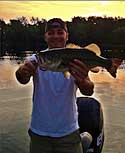
Phillip likes to fish in whatever water is wet and usually likes to catch anything with fins, scales, and eyes, but he prefers bass. His greatest joy in fishing is teaching a child to fish. He strictly practices catch-and-release but sometimes doesn't have to worry about that after a particularly weak hookset.


